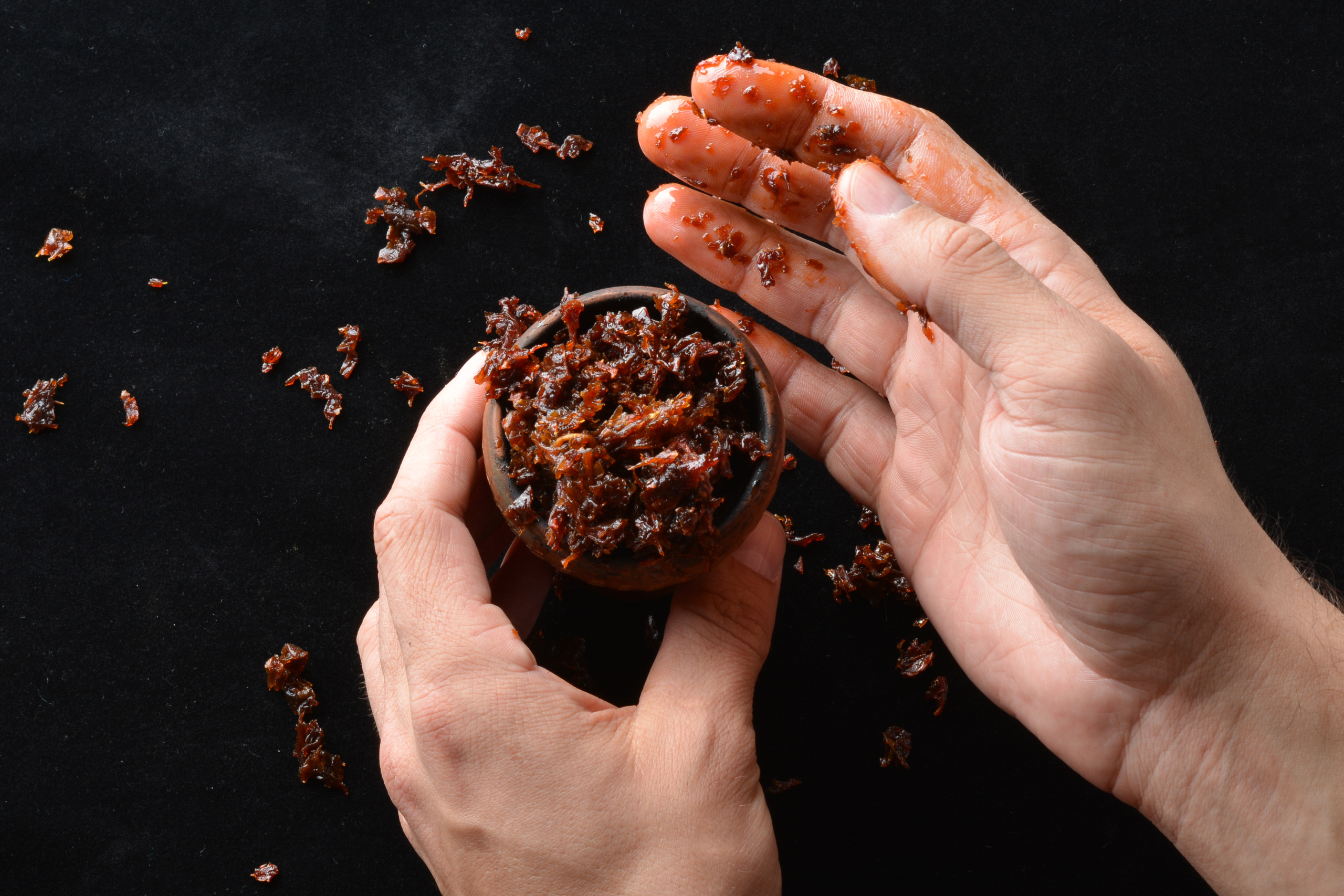Hookahs are waterpipes used to smoke specially-made mixtures of tobacco that come with a wide range of flavours. They normally work by going through the tobacco mixture with charcoal-heated air and eventually through a water-filled chamber. Via a hose and mouthpiece, a person then inhales the smoke. It is often considered by Hookah consumers to be less dangerous than smoking tobacco, but tests indicate that the smoke contains much of the same toxic components present in cigarette smoke, such as nicotine, tar and heavy metals.1 Cigarette smoking is not a healthier substitute.
What’s there in Hookah?
At least 82 harmful chemicals and carcinogens in hookah smoke have been reported.
While the smoke moves into the water, the harmful, addictive chemicals emitted by cigarettes are not removed.
Additional health hazards can occur from the combustion of charcoal used to heat hookah tobacco, since this combustion process creates toxic substances such as carbon monoxide, metals, and other chemicals.
Who Is Using Hookahs?
In the last month, an estimated 590,000 high school students, or 4.1%, and 140,000 middle school students, or 1.2%, have smoked hookah nationally.
Rates of use among boys and girls are comparable, but slightly higher among Hispanic high school students (6.0%) relative to white students (3.3 percent).
There were 2.6 million people using hookah, water pipes, or pipes in 2017. The ratios were slightly higher for men than for women and for uninsured citizens than for private health care employees.
The National College Health Survey of Fall 2018 showed that 14.7 percent of college students have used hookah and 3.1 percent have used it in the past month.
What are those worries?
79.6 percent of existing hookah consumers aged 12-17 state that they use hookah because they enjoy socialising when using the substance, according to one survey. Particularly in urban areas and around college campuses, hookah bars and cafes have increased in popularity
Despite marketing a deadly substance market to young adults as a social, enjoyable and calming atmosphere, 13,14,15 Hookah bars and cafes will offer musical acts, food, and beer, if they are licenced by state or local regulation.
Such companies are also removed from state and municipal smoke-free regulations.
Watermelon, tropical fruit, orange cream, caramel, coffee, tutti frutti, vanilla, and strawberry are available as kid-friendly varieties.
79 percent of young people aged 12-17 who smoked hookah said they used hookah items because “they come in flavours I like.” according to a 2013-2014 poll.
Around Hookah, what do we know?
One research showed that 15- to 23-year-olds who had never smoked cigarettes but tried hookah were more likely to start smoking cigarettes, become frequent cigarette smokers, and two years later, smoke more cigarettes every day.
In 2012-2013, hookah users were 15.7 percent of young adults aged 18-24 who were not established tobacco smokers and were two times as vulnerable to cigarette smoking as those who were not existing users of hookah.
While a normal cigarette takes around 8 to 10 puffs, 19 can entail 100 to 200 puffs in an hour-long hookah session, 20 theoretically exposing the customer over a longer period of time to more smoke.
Study findings have shown that cigarettes gain up to 1.7 times the exposure to nicotine and up to nine times the exposure to carbon monoxide as a single cigarette in a standard hookah smoking session.
What are the safety risks?
Nicotine is an addictive drug that can have permanent negative effects on the growth of the teenage brain and has been associated with a number of adverse health consequences for the developing foetus.
Many of the same adverse health effects as tobacco smoke, such as lung, urinary and oral tumours and heart disease, are associated with hookah smoking.
Long-term symptoms include reduced lung function, chronic respiratory obstructive disease, cancer of the oesophagus and gastric cancer.
Acute health risks, including elevated heart rate and blood pressure, decreased lung function, and carbon monoxide poisoning, are associated with short-term hookah use.
What are some of the laws that refer to Hookah in public?
A law extending its regulatory authority to include all tobacco products, including hookah tobacco, was finalized by the FDA in 2016. However, until 2021, the FDA postponed the regulation of hookah naming, advertisement, marketing, selling, and delivery of hookah tobacco, because there is no actual supervision of these products.
Hookah bars also earn an exception in states or localities with smokefree laws:
A 2015 report found provisions in smokefree regulations for hookah establishments in 24 states, and exceptions that exclude establishments in another 14 states that earn a fixed percentage of sales of tobacco products.
A analysis of smoke-free regulations in the 100 biggest U.S. cities showed that there were exemptions for hookah use in 69 of the 73 cities that ban cigarette smoking in bars.
Removing exemptions in smokefree legislation for hookah facilities will decrease exposure to secondhand smoke and help keep hookah out of children’s hands.
Where approved, states and localities have specific power to ban the selling of flavoured tobacco products (or other tobacco product) with a view to reducing the consumption of tobacco and reducing its damage to its residents. Several localities, including San Francisco and Minneapolis, have enacted bans on sales of flavoured tobacco products that concern hookah tobacco.
Tobacco used for hookah is mostly regulated in the states and at the federal level at a lower rate than tobacco. Higher taxes that raise the price of hookah are an efficient way to minimize the consumption of nicotine by young people. If available at reduced cost, it offers an additional, lower-priced tobacco product for cigarette smokers. It also allows smokers to move, rather than stop, items.

